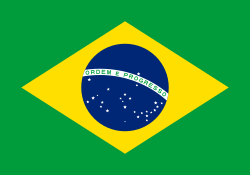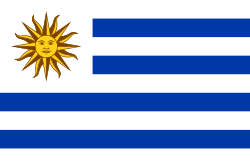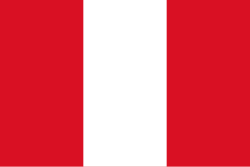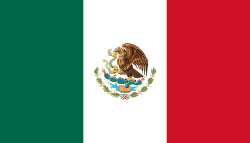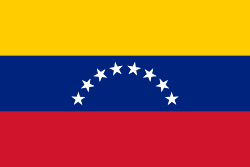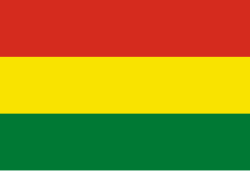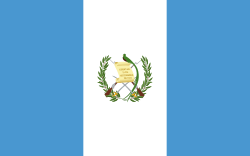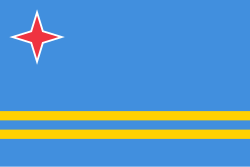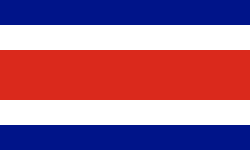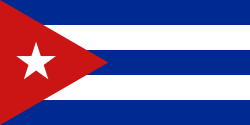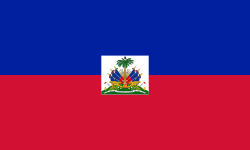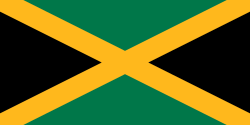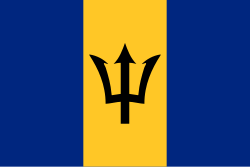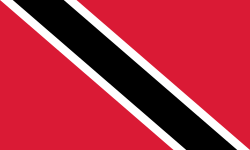Davis Cup 2010 – Americká zóna
Americká zóna byla jednou ze tří regionálních zón Davisova poháru 2010, v níž hrálo dvacet tři členů Mezinárodní tenisové federace ze Severní a Jižní Ameriky. Tvořily ji čtyři výkonnostní skupiny.
Účastníci
1. skupina
- Nasazené týmy
 Brazílie (postup do Play-off Světové skupiny 2010)
Brazílie (postup do Play-off Světové skupiny 2010) Kolumbie (postup do Play-off Světové skupiny 2010)
Kolumbie (postup do Play-off Světové skupiny 2010)
- Nenasazené týmy
 Dominikánská republika (sestup do 2. skupiny v roce 2011)
Dominikánská republika (sestup do 2. skupiny v roce 2011) Kanada
Kanada Uruguay
Uruguay
2. skupina
- Nasazené týmy
 Peru
Peru Mexiko (postup do 1. skupiny skupiny v roce 2011)
Mexiko (postup do 1. skupiny skupiny v roce 2011) Paraguay
Paraguay Venezuela
Venezuela
- Nenasazené týmy
3. skupina
 Aruba (sestup do 4. skupiny v roce 2011)
Aruba (sestup do 4. skupiny v roce 2011) Bahamy
Bahamy Bermudy (sestup do 4. skupiny v roce 2011)
Bermudy (sestup do 4. skupiny v roce 2011) Kostarika
Kostarika Kuba
Kuba Haiti (postup do 2. skupiny v roce 2011)
Haiti (postup do 2. skupiny v roce 2011) Jamajka
Jamajka Portoriko (postup do 2. skupiny v roce 2011)
Portoriko (postup do 2. skupiny v roce 2011)
4. skupina
Média použitá na této stránce
The flag of the Dominican Republic has a centered white cross that extends to the edges. This emblem is similar to the flag design and shows a bible, a cross of gold and 6 Dominican flags. There are branches of olive and palm around the shield and above on the ribbon is the motto "Dios,Patria!, Libertad" ("God, Country, Freedom") and to amiable freedom. The blue is said to stand for liberty, red for the fire and blood of the independence struggle and the white cross symbolized that God has not forgotten his people. "Republica Dominicana". The Dominican flag was designed by Juan Pablo Duarte, father of the national Independence of Dominican Republic. The first dominican flag was sewn by a young lady named Concepción Bona, who lived across the street of El Baluarte, monument where the patriots gathered to fight for the independence, the night of February 27th, 1844. Concepción Bona was helped by her first cousin María de Jesús Pina.
The flag of the Dominican Republic has a centered white cross that extends to the edges. This emblem is similar to the flag design and shows a bible, a cross of gold and 6 Dominican flags. There are branches of olive and palm around the shield and above on the ribbon is the motto "Dios,Patria!, Libertad" ("God, Country, Freedom") and to amiable freedom. The blue is said to stand for liberty, red for the fire and blood of the independence struggle and the white cross symbolized that God has not forgotten his people. "Republica Dominicana". The Dominican flag was designed by Juan Pablo Duarte, father of the national Independence of Dominican Republic. The first dominican flag was sewn by a young lady named Concepción Bona, who lived across the street of El Baluarte, monument where the patriots gathered to fight for the independence, the night of February 27th, 1844. Concepción Bona was helped by her first cousin María de Jesús Pina.
Flag of Canada introduced in 1965, using Pantone colors. This design replaced the Canadian Red Ensign design.
| Flag of Bolivia* | |
|---|---|
| country | Template:I18n/Republic of Bolivia |
| used by | Bolivia |
| from | 1851 |
| until | Present |
| created by | Government of Bolivia |
| format | 15:22 |
| shape | rectangular |
| colours | červená, žlutá, zelená
flag has 3 horizontal stripes |
| other characteristics | A horizontal tricolor of red, yellow and green. |
The flag of Aruba
The national and official state flag of Haiti; arms obtained from File:Coat of arms of Haiti.svg. The civil flag can be found at here.
Flag of Jamaica. “The sunshine, the land is green, and the people are strong and bold” is the symbolism of the colours of the flag. GOLD represents the natural wealth and beauty of sunlight; GREEN represents hope and agricultural resources; BLACK represents the strength and creativity of the people. The original symbolism, however, was "Hardships there are, but the land is green, and the sun shineth", where BLACK represented the hardships being faced.
